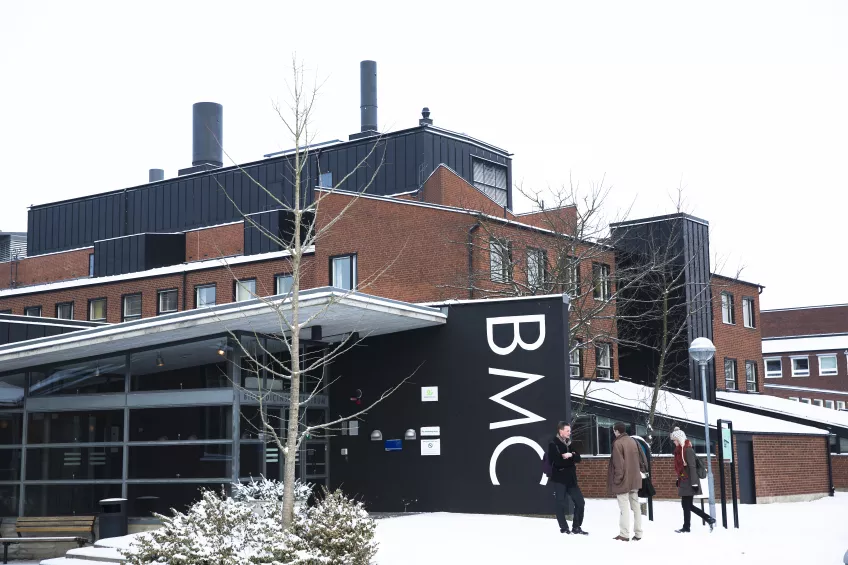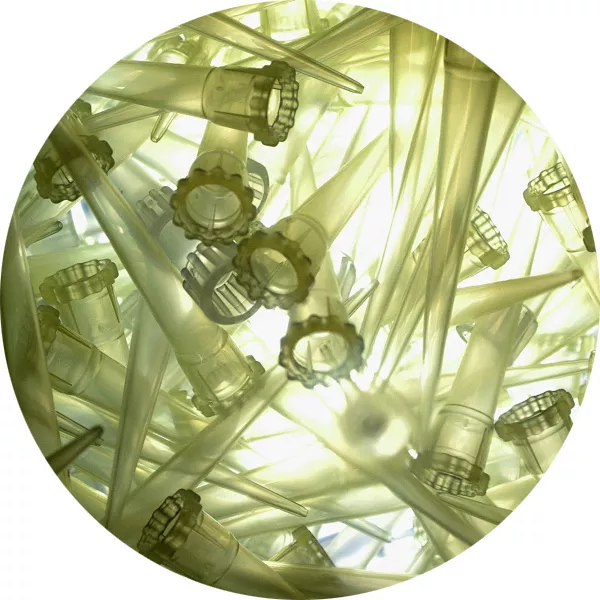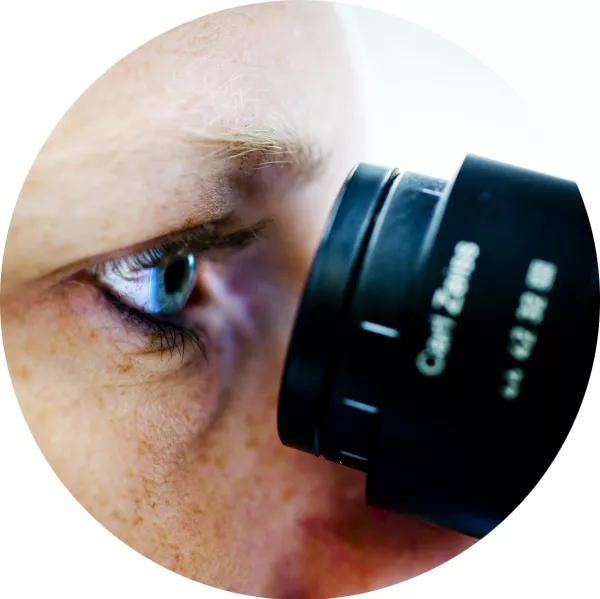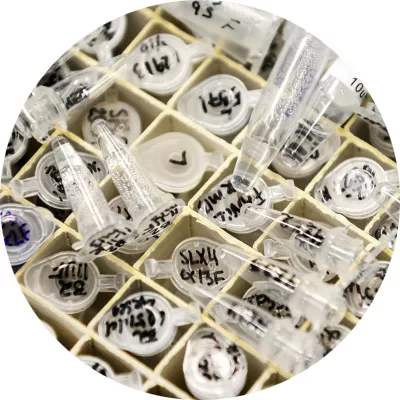UniStem workshops 2019
Can you grow a brain in a dish? How do blood stem cells look in the microscope? Can you decipher the code of life?
These and many more questions will be answered by motivated PhD students, postdoctoral fellows, and senior scientists during UniStem Day on March 15th, 2019.
Below you find a list of workshops and hands-on sessions that we will offer during UniStem Day at Lund Stem Cell Center. The workshops will be held in Swedish and/or English.
Welcome!
1. Behavioural assessment of neural stem cell transplants – From animal models to functional assessment
In this workshop we will present how researchers assess neural stem cells in vivo. We will give an introduction about research on laboratory animals, how we create models of neurodegenerative diseases, and how to assess the neural stem cells in vivo. The focus is on Parkinson’s disease and the transplantation of cells into the brain of rodents. After the workshop the students will have a basic idea about the animal models used for transplantation, how to assess graft survival and the immune-response, and also how a neural stem cell transplant can improve the behaviour of a rodent that has been rendered parkinsonian. The workshop will be based on presentations of the most commonly used behavioural test as well as some equipment. Due to the restricted nature of animal testing the practical part of the session will be limited.
Contact
Shelby Shrigley, PhD student at Developmental and Regenerative Neurobiology
Andrew Adler, Postdoctoral fellow at Developmental and Regenerative Neurobiology
Deirdre Hoban, Postdoctoral fellow at Developmental and Regenerative Neurobiology
Tiago Cardoso, Postdoctoral fellow at Developmental and Regenerative Neurobiology
Michael Sparrenius, Technician at Developmental and Regenerative Neurobiology
2. Can you grow a brain in a dish?
The inaccessibility of functional human brain tissue and the inability of two-dimensional in vitro cultures to recapitulate the complexity and function of dopaminergic circuitries have made the study of human brain functions and dysfunctions challenging. In this workshop, we will show a method for differentiating human pluripotent stem cells into three-dimensional (3D) dopaminergic organoids, which mimic features of human ventral midbrain (VM) development by recreating authentic and functional dopamine neurons. The students will be able to see the organoid maturation at microscope over the time and perform medium change. After that, they will have the chance to watch short movies of immunolabelling-enabled 3D imaging of whole organoids in which we reconstruct regional identities, spatial organization and connectivity maps providing them an anatomical prospective of dopaminergic organoids.
Contact
Alessandro Fiorenzano, Postdoctoral fellow at Developmental and Regenerative Neurobiology
Jessica Giacomoni, PhD student at Developmental and Regenerative Neurobiology
Yu Zhang, Postdoctoral fellow at Developmental and Regenerative Neurobiology
Michael Sparrenius, Technician at Developmental and Regenerative Neurobiology
3. Exploring the cell diversity of the brain
Did you know that neurons are not the only cell type in the human brain? We will tell you about all the cells that form the brain and how these cells look like under the microscope. Thereafter, you will also have the opportunity to take care of them.
Contact
Laura Torres-Garcia, PhD student at Experimental Dementia Research
Eliska Waloschkova, PhD student at Experimental Epilepsy
4. Transplant cells into the brain and find them
Have you ever wondered how scientists are able to study human cells into the mouse brain? In this workshop students will learn and practice how to transplant cells (mock injections) inside the brain (gelatine brains), they will practice the process of cutting a brain in thin slices, mark the proteins of different cell types using specific antibodies that recognise them and mount the sliced sections on slides to visualise them under the microscope. For each step, students will first get a short introduction and later they will be able to practice the techniques. They will be encouraged to ask questions along the workshop.
Contact
Jonas Fritze, PhD student at Stem Cells, Aging and Neurodegeneration
Ella Quist, PhD student at Stem Cells, Aging and Neurodegeneration
Isaac Canals, Postdoctoral fellow at Stem Cells, Aging and Neurodegeneration
Sara Palma, Postdoctoral fellow at Laboratory of Stem Cells and Restorative Neurology
Mazin Hajy, PhD student at Laboratory of Stem Cells and Restorative Neurology
5. Discover the machinery of a blood stem cell
Proteins are the building blocks that make up all the cells in your body as well as function as the cells’ machinery. In this workshop, you will discover proteins that are important for blood stem cells and how to study them. The workshop will start with a practical exercise in our lab where you will extract proteins from cells and determine their concentration. We will then give a short presentation where you will learn about a proteins composition and how it determines its properties, followed by a hands-on activity where you will use your new-found knowledge to practice methods commonly used in the study of proteins (proteomics).
Contact
Kristýna Pimková, Postdoctoral fellow at Proteomic Hematology
Maria Jassinskaja, PhD student at Proteomic Hematology
6. Deciphering the code of life
Your identity, what disorders you could get and how your brain creates thoughts is directed by your DNA, a string of more than 3 billion nucleotides residing inside your cells. How do scientist make sense of such a complex code? In this workshop we will demonstrate how mathematics and computer science will be key to understanding human disorders, as well as comprehending life itself.
Contact
Daniela Grassi, PhD student at Molecular Neurogenetics
Raquel Garza, Student at Molecular Neurogenetics
7. How to separate cancer stem cells from normal stem cells using single-cell technology
In this workshop we will introduce the single-cell qPCR technology where each cell's gene expression is measured and used to separate healthy and cancerous stem cells. The students will learn to pipette in small chips and load the sample in the machine.They will also look at results to see the molecular differences between each single cancer stem cell and a normal cell.
Contact
Mikael Sommarin, PhD student at the Division of Molecular Hematology
Fatemeh Safi, PhD student at the Division of Molecular Hematology
8. Bone marrow in the florescence spotlight
A lot of blood diseases show abnormalities in the patient’s bone marrow, the place where all blood cells are produced. In this workshop we will look at human bone marrow biopsies. There are different cells in the bone marrow that can be visualized in lots of ways. You will be looking at thin slides through a fluorescence microscope and you might even see something glow!
Contact
Franziska Olm, PhD student at the Division of Molecular Hematology
Sandro Meyer, PhD student at the Division of Molecular Hematology
9. Precious hematopoietic stem cells in cord blood
In the theoretical part (15 minutes) we will tell you about hematopoietic stem cells (HSC) and their therapeutic applications in the clinic. We will focus on umblical cord blood-derived HSCs. The umblical cord connects the baby with the mother during pregnancy and is a rich source of HSCs. After the delivery, a good amount of HSCs can be collected from the umblical cord. In the practical part (30 minutes), we will explain and show the major steps of HSC isolation from umblical cord blood and how to assess the purity of isolated cells by flow cytometry.
Contact
Kristijonas Zemaitis, PhD student at the Division of Molecular Medicine and Gene Therapy
Agatheeswaran Subramaniam, Postdoctoral fellow at the Division of Molecular Medicine and Gene Therapy
10. A recipe to extract DNA
James Watson and Francis Crick co-discovered deoxyribonucleic acid (DNA) in 1953. During this workshop we will show you an easy and quick way of extracting DNA. You will also learn about applications of DNA extraction.
Contact
Kaspar Russ, Postdoctoral fellow at IPSC Laboratory for CNS Disease Modeling
Carla Azevedo, PhD student at IPSC Laboratory for CNS Disease Modeling
11. Blood stem cell isolation from mouse bone marrow
The aim of the workshop is to show the students how we study hematopoietic stem cells. We will give a brief theoretical introduction on hematopoiesis and hematopoietic stem cells (HSCs), followed by a practical demonstration on how to isolate HSCs. This isolation process will involve crushing a bone (that we previously isolated from a mouse) to obtain a single cell suspension. The cells will then be stained with an antibody mix, followed by a brief run on the FACS machine.
Contact
Anna Konturek, PhD student at the Division of Molecular Hematology
Mohamed Eldeeb, PhD student at the Division of Molecular Hematology
12. Enzymatisk subkultivering av mesenkymala stromaceller
När celler växer så behöver man dela upp cellerna i flera kulturer för att ge dem mer utrymme att fortsätta växa. Vi kommer därför att genomföra en subkultivering av mesenkymala stromaceller från benmärg med enzymet trypsin. Dessa celler vi subkultiverar använder vi normalt sätt för att supporta blodstamceller och leukemiceller i cellodling som är svåra att odla annars och bedriva forskning på.
Kontakt
Simon Hultmark, PhD student at the Division of Molecular Medicine and Gene Therapy
Sofia Wijk, PhD student at the Division of Molecular Medicine and Gene Therapy
Pavan Prabhala, Postdoctoral fellow at the Division of Molecular Medicine and Gene Therapy
13. Direct reprogramming: Making red blood cells from skin cells
Red blood cells account for 84% of all cells in human bodies and are produced at a rate of 2 million cells per second throughout life. In this workshop, we will discuss how we can use master genes to convert skins cells directly into red blood cells in the lab. In our lab, we use these reprogrammed cells to study the production of red blood cells in the body. We will also go into the lab to look at the process of reprogramming these cells and each student will have a chance to see these cells under a microscope.
Contact
Taha Sen, PhD student at the Division of Molecular Medicine and Gene Therapy
Melissa Ilsley, Postdoctoral fellow at the Division of Molecular Medicine and Gene Therapy
14. Reprogramming brain cells from skin cells
This workshop will include a tour of the lab where cell culture is performed. In our lab, we reprogram skin cells from Parkinson’s and Huntington's disease patients into neurons. The students will be able to see the morphological changes that occur along the process in these cells, and get some insight about the procedures used for cell conversion (approximately 30 minutes) and perform a medium change. After that, they will have the chance to look at the cells at the stage where conversion is complete (15 min).
Contact
Karolina Pircs, Postdoctoral fellow at Molecular Neurogenetics
Fredrik Nilsson, Student at Developmental and Regenerative Neurobiology
Sara Nolbrant, PhD student at Developmental and Regenerative Neurobiology
15. Can we measure how neurons communicate and function in the brain?
This workshop will give students a brief introduction on how you can assess the function of living cells, such as neurons from cell cultures or from tissue sections of animal models. How do neurons communicate with each other? Are there differences in the healthy or diseased state? To answer these questions, we will apply whole-cell patch clamping, an electrophysiological measurement. After a short description of the technique we will demonstrate it hands-on in the lab.
Contact
Daniella Ottosson, Senior scientist at Developmental and Regenerative Neurobiology
Marcella Birtele, PhD student at Developmental and Regenerative Neurobiology
16. CRISPR-Cas9 – a revolutionary tool for genetic engineering?
This workshop will start with an overview of the technology, its novelty and applications. We will then examine the DNA sequence of a gene and look for potential cut sites, design guide RNAs and talk about how to perform an experiment. More importantly, we will also discuss what happens in the DNA after the CRISPR-cut. We will then end with a small discussion of the potential of CRISPR-technology in human gene-editing and the ethical considerations surrounding this new approach.
Contact
Pia Johansson, Platform manager CRISPR facility
Diahann Atacho, Postdoctoral fellow at Molecular Neurogenetics
17. How to use viruses to cure serious diseases
This workshop is about how blood stem cells and viruses can be used to cure dangerous diseases. We will show you how viruses are made in the lab, and how they are used in gene therapy to treat patients. You will prepare a DNA sample that will be used to produce a virus that can correct a mutated gene in blood stem cells.
Contact
Ludwig Schmiderer, PhD student at the Division of Molecular Medicine and Gene Therapy
Alexandra Bäckström, PhD student at the Division of Molecular Medicine and Gene Therapy
18. Snitta hjärnan och hitta transplantat
Ni kommer att få se hur man snittar en hjärna och hur man sen märker in den med speciella antikroppar för att kunna visualisera transplanterade stamceller. I mikroskopet letar vi sen upp cellerna och tittar på hur de transplanterade cellerna ser ut. Vi kommer även att visa hur man använder avancerad 3D imaging.
Kontakt
Ulla Jarl, Biomedicinsk analytiker i gruppen Developmental and Regenerative Neurobiology
Bengt Mattson, Developmental and Regenerative Neurobiology
Deirdre Hoban, Postdoctoral fellow at Developmental and Regenerative Neurobiology
19. Isolate and image cells: Flow cytometry, cell sorting and automated image analysis
First, we will give an introduction to the Fluorescence Activated Cell Sorting (FACS) technique. FACS enables the isolation of specific cell types, based on the labeling of cellular structures with fluorescent molecules that emit light of different colors. The aim of sorting cells is to obtain pure populations of the cell types of interest for the study of e.g. gene and protein expression, cell development, cell shape, and intracellular processes.
After that we will move to Cellomics High Content Screening and show automated image analysis of cells labeled with fluorescence. Applying automated image analysis makes it possible to rapidly analyze thousands of microscope images to e.g. measure protein expression, evaluate co-localization and distribution of targets in a cell, count and measure branching of neurites. (20 min)
Contact
Anna Hammarberg, MultiPark - Cellomics and Flow Cytometry Core Facility
Tiziana Hey, Student at Molecular Neurogenetics
20. Getting hands-on with biological data in virtual reality
The students will learn about how we are using virtual reality to analyse biological data, and how its being used to enable non-computational people to properly interrogate big-data in an easy and immersive manner.
Contact
Johan Rodhe, Software engineer at the Division of Molecular Hematology
Oscar Legetth, Software engineer at the Division of Molecular Hematology
21. Blood stem cells under the microscope
If you ever wondered how stem cells look like under a microscope, or at this very moment realized that you do, this workshop is for you! You will get a look at live blood stem cells, as well as mature blood cells under the microscope.
Contact
Svetlana Soboleva, PhD student at the Division of Molecular Medicine and Gene Therapy
Hugo Åkerstand, PhD student at the Division of Molecular Hematology





